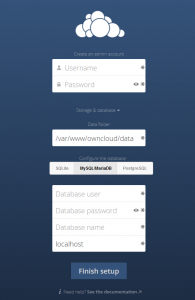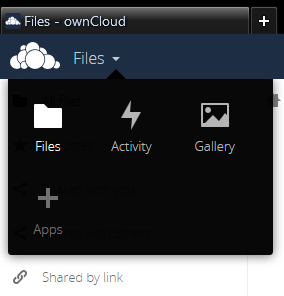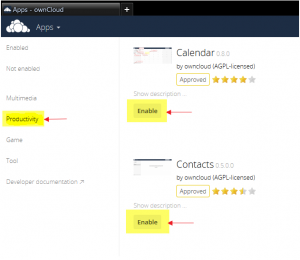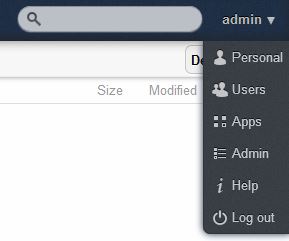This quick how-to steps you through a simple installation of OwnCloud to a Ubuntu 14.04 server.
First, you need some prereqs:
sudo apt-get install php5-gd mysql-server
To begin, you need to add the repository for ownCloud for ubuntu 14.04.
wget -nv https://download.owncloud.org/download/repositories/stable/xUbuntu_14.04/Release.key -O Release.key apt-key add - < Release.key
Next, update the lists and install the package.
sh -c "echo 'deb http://download.owncloud.org/download/repositories/stable/xUbuntu_14.04/ /' >> /etc/apt/sources.list.d/owncloud.list" apt-get update apt-get install owncloud
Once the package is installed, access the ownCloud interface at http://SERVERNAME/owncloud
The first time you launch it, it will prompt you to create an admin id and password. Optionally, you can pick the Data folder location and choose MySQL vs SQLite.
After you create the admin user and sign into the OwnCloud Interface, if you are installing this for home use, you will probably want to enable some basic plug-ins. If you plan on syncing calendars and contacts, then you will need at least those 2 add-ons.
Click on the Files entry on the upper left for the pull down menu shown below. Click on the + to add new apps.
Select ‘Productivity’ from the left hand menu and Enable the Calendar and Contacts Applications.
Once completed, you will be taken to the web interface. Here you can add users and adjust settings as needed. I create the users here and that will pretty much complete the basic install.
Last thing to do is load a desktop client available from ownCloud’s web page http://owncloud.org/sync-clients/
Next Steps that you should consider:
1) Enforce https connectivity to the owncloud, this is done through the admin menu selection.
2) Turn on Antivirus. Enabling this app in the Admin->apps menu sets up ClamAV to scan all uploaded content.
3) Make sure you are backing up the Owncloud Data Directory and the MySQL database.
There are additional options here for LDAP authentication, email alerts, and much more beyond this basic setup. Explore the add-on applications as well.






